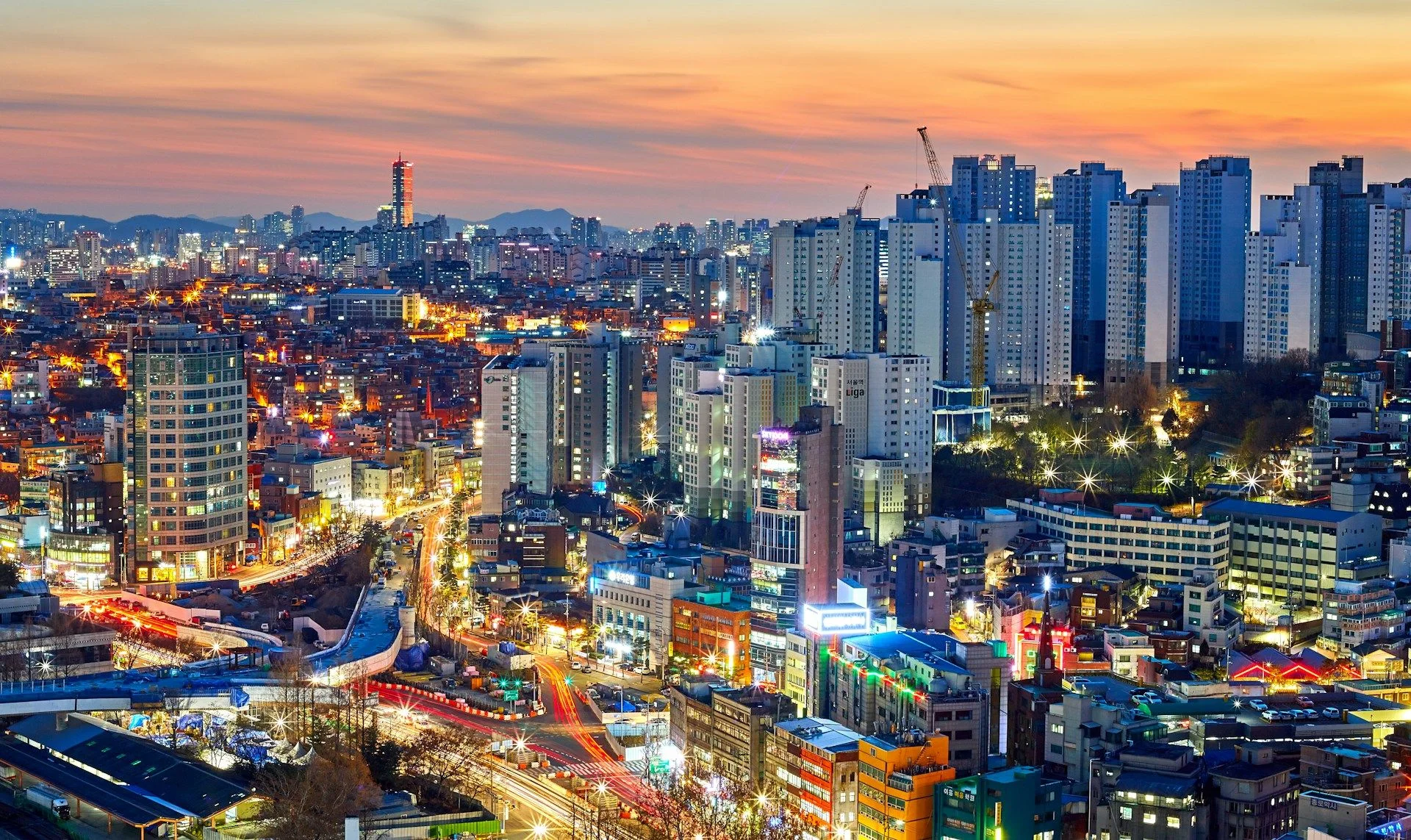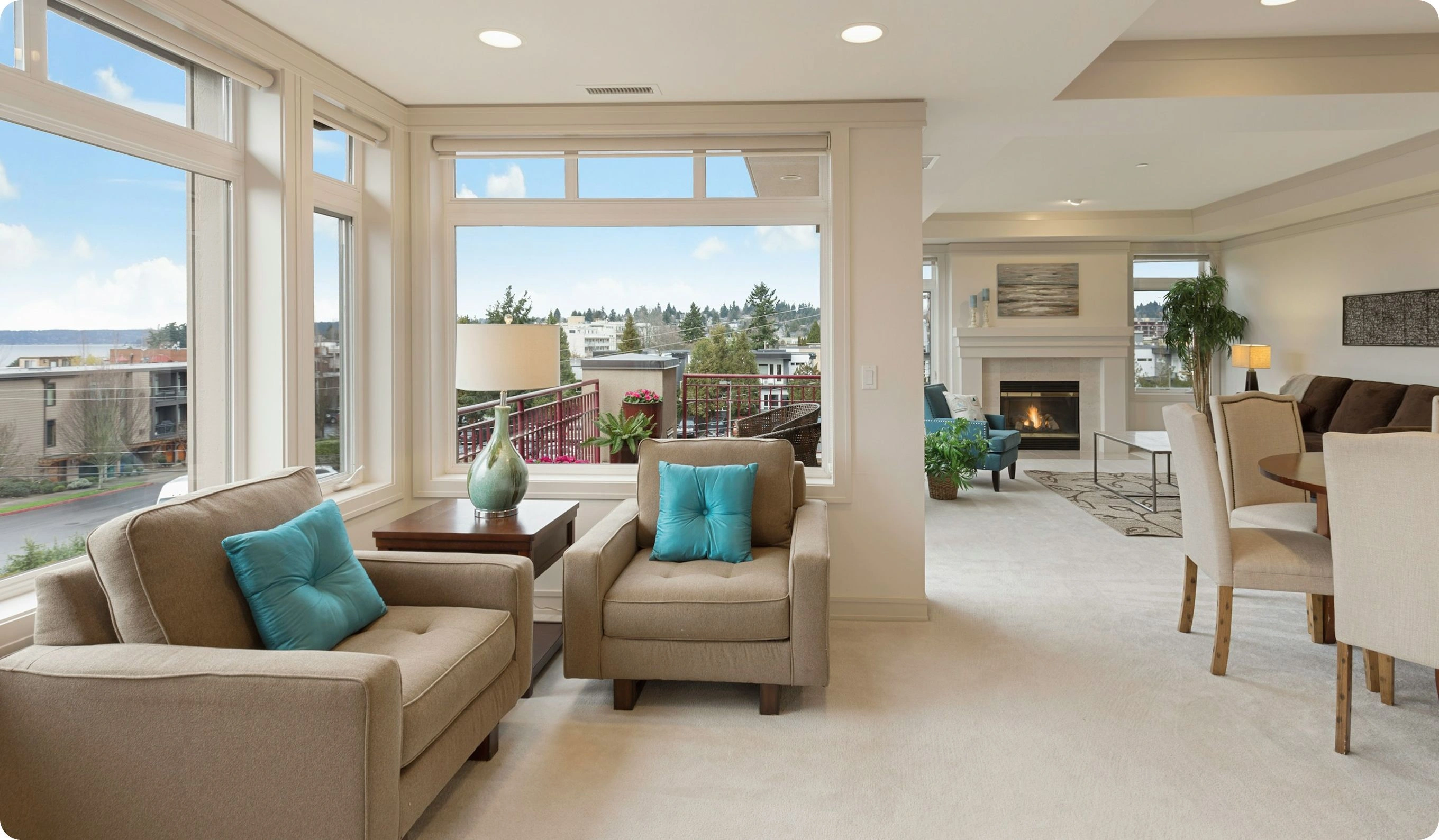Verified Secondary Real Estate in South KoreaCoastal, tech-driven andbuilt for modern life

Best offers
in Korea
Benefits of investment in
South Korea real estate
High-tech urban living with property value stability
Major cities like Seoul offer strong infrastructure, public transport, and value retention in real estate.
Fast resale and rental demand in key areas
Districts near universities, business centers, and transit hubs show constant demand from renters and buyers.
Condos with security, amenities, and minimal upkeep
Modern apartments often include doorman service, gyms, and automated systems — ideal for remote owners.
High-tech urban living with property value stability
Major cities like Seoul offer strong infrastructure, public transport, and value retention in real estate.
Fast resale and rental demand in key areas
Districts near universities, business centers, and transit hubs show constant demand from renters and buyers.
Condos with security, amenities, and minimal upkeep
Modern apartments often include doorman service, gyms, and automated systems — ideal for remote owners.

Useful articles
and recommendations from experts
Main title about secondary real estate in South Korea
Why secondary properties attract buyers
Secondary real estate in South Korea provides immediate access to fully commissioned homes across one of Asia’s most efficient urban systems. Instead of waiting through construction cycles and post-handover defect periods, buyers step into operating apartments and townhouses already embedded in mature districts with dependable utilities, building management and everyday services. In a country where mobility and convenience drive daily decisions, the resale segment aligns with how residents actually live: short walks to subway stations, predictable commutes via KTX intercity links, and dense layers of retail, clinics, culture and parks. Because secondary assets are proven by use rather than renderings, underwriting can be anchored to observable attributes—daylight patterns, acoustic exposure, water pressure at peak times, elevator wait profiles and the responsiveness of the homeowners’ association—reducing variance between projections and lived reality.
Another draw is specification maturity. South Korean homes commonly feature floor heating, efficient glazing and ventilation strategies appropriate to seasonal climates. Many pre-owned units have undergone targeted modernisation: grounded wiring, pressure-regulated plumbing, inverter HVAC, LED lighting and fibre internet. Kitchens and bathrooms are frequently refitted with durable, low-maintenance finishes; balconies and loggias are optimized for storage or laundry. These upgrades lower early-life capex for buyers and shorten time to occupancy or rent. For investors, the result is cleaner operations, fewer service calls and higher renewal rates—the quiet levers that compound lifetime yield.
Established neighbourhoods
In Seoul, the resale core extends along subway Lines 2, 3, 7 and 9 and the GTX/KTX axes, where mixed-use precincts combine office towers with quiet residential pockets and walkable commerce. Gangnam, Seocho and Songpa concentrate premium stock with concierge standards, underground parking and proximity to schools and medical hubs. Yeouido and Mapo blend finance and media demand with riverfront parks, sustaining reliable tenancy when acoustic exposure and envelope performance are well managed. North of the river, Seongbuk and Nowon balance affordability with strong links to universities and hospitals; refurbished mid-rise blocks and governance-strong towers outperform where storage and ventilation are thoughtfully executed.
Beyond the capital, Busan’s coastal districts—Suyeong, Haeundae and Nam—offer sea views, subway access and tech and tourism corridors that support occupancy through cycles. Incheon aligns resale value with airport access, Free Economic Zone employment and the broader Seoul commuter shed. Daejeon and Daegu, anchored by research parks, universities and medical centers, generate steady tenant pipelines for compact and family-scaled units; Gwangju’s culture and education clusters create dependable absorption in governance-strong buildings. Across these markets, municipal fundamentals—paved access, lighting, drainage, waste collection and routine public-realm upkeep—are delivered with consistency, which translates into smoother ownership and daily calm for residents.
Who buys secondary real estate
Buyer diversity strengthens the secondary market nationwide. Resident professionals target one- and two-bedroom layouts near subway interchanges that compress door-to-desk times and support hybrid work. Dual-income families prioritize two- and three-bedroom plans with functional kitchens, vented bathrooms, balcony usability and storage that clears circulation; proximity to academies, parks and clinics is decisive. University and medical belts attract students, researchers and staff to compact, quiet exposures with strong broadband and governance that handles parcels and maintenance on schedule. Corporate housing teams secure mid-sized units in towers near CBDs and industrial parks; returning diaspora buyers often pursue a dual-utility outcome—personal stays plus compliant medium-term leasing between visits. Across profiles, motivations converge on three pillars: immediate habitability, measurable mobility and predictable running costs.
For investors, the secondary segment offers transparency. Buildings publish management accounts and reserve plans; minutes and notices reveal governance culture; achieved rents are verifiable at the street level. VelesClub Int. layers on independent inspections and live rent benchmarking to select only those assets whose operating reality aligns with their marketing, rejecting cosmetic upgrades that hide poor acoustics, inefficient layouts or underfunded plant.
Market types and price ranges
South Korea’s resale inventory spans a pragmatic continuum shaped by transit and employment hubs. Entry assets include studios and compact one-bedroom apartments in lift-served blocks near secondary stations, leased quickly to singles and weekday commuters due to manageable monthly outlays and quantifiable commute savings. Core family stock comprises two- and three-bedroom apartments in mid- to high-rise condominiums with elevator access, stroller-friendly lobbies and bicycle storage; demand concentrates within ten to fifteen minutes of key subway lines. Premium secondary options include high-floor units with skyline or coastal outlooks, dual-aspect living rooms and deeper balconies, plus townhouse-style homes in lower-density pockets that emphasize privacy while maintaining access to rail and arterials.
Price and rentability are particularly sensitive to micro-factors: stack position in the building, orientation to morning or afternoon sun, acoustic shielding from intersections or elevated tracks, water pressure at peak times, window assembly quality and kitchen workflow. Buildings with transparent management budgets, funded reserves and timely maintenance of lifts, heating plants and façades reduce special levies and protect net yield. Value creation in the secondary segment typically comes from measured specification lifts—lighting layers, storage systems, ventilation tuning, smart locks and network improvements—rather than heavy renovations that risk overcapitalization. VelesClub Int. underwrites each candidate with conservative expenses and realistic vacancy so pro-forma behavior tracks operations.
Legal process and protections
South Korea’s conveyancing framework for resale property is structured and documentation-led. Transactions progress from price agreement to a binding contract, deposit mechanics and a scheduled completion, with registration at the appropriate office perfecting ownership against third parties. Buyers engage licensed agents and legal professionals to confirm title, encumbrances and boundaries; condominium purchasers review building rules, meeting minutes, financial statements and planned works to gauge governance quality and future obligations. Technical due diligence focuses on envelope condition, water ingress risks, plumbing stacks and pressure, electrical capacity and grounding, elevator logs, fire-safety systems and the status of heating and ventilation equipment. Inside the unit, inspection assesses window seals, acoustic performance, daylight, storage logic and appliance age; where furniture and white goods transfer, an itemized inventory and meter readings accompany closing to make handover unambiguous.
Foreign purchasers can acquire residential property subject to prevailing reporting and registration requirements. Because policy can evolve by locality and asset type, VelesClub Int. aligns buyers with current local counsel, verifies compliance for prior renovations and structures funds flow through controlled accounts so completion occurs only when conditions are satisfied. This diligence-first approach compresses the interval between signing and occupancy and lowers the probability of post-closing surprises.
Best areas for secondary market
Performance concentrates where mobility, services and everyday calm intersect. In Seoul’s eastern and southern axes, neighborhoods within one transfer of multiple job clusters exhibit the shortest marketing windows and most predictable renewals. Units with quiet exposure, functional balconies and governance-strong management outperform on tenant satisfaction. River-adjacent precincts renew at high rates when acoustic treatment and window sealing blunt traffic noise while preserving light and airflow. University and hospital belts generate dependable cycles for compact stock that is furnished thoughtfully and managed professionally.
In Busan, Suyeong and Haeundae combine metro connectivity, beaches and corporate demand, rewarding well-insulated units with corrosion-aware finishes and cross-ventilation. Incheon’s Songdo and Yeonsu districts leverage FEZ employment and airport access; compact units near stations lease quickly to professionals with travel-heavy schedules, while larger apartments in governance-strong towers serve families seeking school proximity and quiet streets. Daejeon’s research corridor and Daegu’s medical clusters sustain year-round pipelines for one- and two-bedroom apartments within short reach of transit interchanges. Gwangju’s culture and education network drives absorption in buildings with transparent service-charge accounting and timely plant maintenance.
Why choose secondary over new + VelesClub Int. support
Selecting secondary property in South Korea resolves three constraints simultaneously. First, timeline risk collapses: the asset exists, operates and can be occupied or leased soon after closing, so cash flow starts sooner and holding costs are controlled. Second, specification uncertainty diminishes: acoustics, ventilation, water pressure, daylight, balcony usability and building-management responsiveness are tested in person during diligence rather than inferred from drawings. Third, capital allocation becomes precise: instead of underwriting developer premiums and defect-liability periods, buyers can fund targeted improvements with measurable comfort and rentability payoffs—window sealing, exterior shading, layered lighting, storage solutions, water-pressure stabilization, smart locks and network upgrades.
VelesClub Int. amplifies these advantages with end-to-end execution. Our sourcing looks beyond glossy portals to include thinly traded and off-market opportunities; valuations reference achieved rents and transactions rather than aspirational asks; and underwriting assumes conservative expenses, realistic vacancy and periodic plant renewal. Legal and technical teams coordinate document collection, registry verification and compliance checks on prior works, negotiating seller participation for cure items where appropriate. Post-closing, our operations desk manages compliant leasing, preventive maintenance, service-charge reconciliation and performance dashboards that consolidate occupancy, arrears, work orders, capex and benchmarks. The outcome is a quiet compounder: a secondary asset in South Korea that delivers resilient cash flow, preserves capital and remains liquid across transit-rich, service-anchored cities where everyday convenience is the ultimate amenity.



